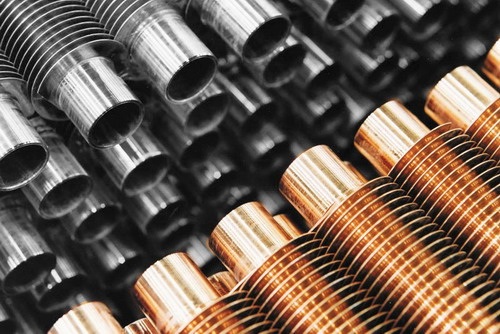Which is better use aluminum fin tube or copper fin tube in heat exchanger?
Which is better use aluminum fin tube or copper fin tube in heat exchanger?
Both aluminum fin tubes and copper fin tubes have their advantages and disadvantages in heat exchanger applications. The choice of which to use depends on various factors such as the specific requirements of the application, cost, and availability of the materials.
Copper fin tubes are generally preferred for their superior heat transfer properties, which allow for more efficient heat exchange. They also have excellent corrosion resistance, making them ideal for use in harsh environments. However, copper is more expensive than aluminum, and copper fin tubes may require more maintenance and cleaning to prevent corrosion.
On the other hand, aluminum fin tubes are lighter, less expensive, and easier to manufacture than copper fin tubes. They are also more resistant to damage and corrosion in certain environments, such as those with high humidity or salt content. However, aluminum has lower thermal conductivity than copper, which can result in slightly lower efficiency in heat transfer.
In summary, the choice of which fin tube material to use in a heat exchanger ultimately depends on the specific application requirements, and a careful evaluation of the pros and cons of each material should be done before making a decision.
Aluminum fin heat exchanger
An aluminum fin heat exchanger is a type of heat exchanger that uses aluminum fins to increase the surface area for heat transfer. The basic design of an aluminum fin heat exchanger consists of a set of aluminum fins that are attached to a series of tubes through which the hot or cold fluid flows.
The aluminum fins are designed to maximize the surface area available for heat transfer between the fluids. This increased surface area allows for more efficient heat transfer and can result in a more compact design than traditional heat exchangers.
Aluminum is a popular choice of material for the fins in heat exchangers due to its high thermal conductivity, lightweight, and corrosion resistance. The use of aluminum fins also allows for a more cost-effective solution compared to other materials, such as copper or stainless steel.
Aluminum fin heat exchangers are commonly used in a variety of industrial applications, including HVAC systems, refrigeration, power generation, and automotive cooling systems. They are particularly useful in applications where high heat transfer rates are required and where weight and cost considerations are important.
Overall, aluminum fin heat exchangers are an efficient and reliable solution for heat transfer applications, offering a cost-effective and lightweight option that can be tailored to meet specific design requirements.
Copper fin heat exchanger
A copper fin heat exchanger is a type of heat exchanger that uses copper fins to increase the surface area for heat transfer. Copper is a popular material for the fins in heat exchangers due to its high thermal conductivity, corrosion resistance, and durability.
The basic design of a copper fin heat exchanger is similar to that of an aluminum fin heat exchanger, consisting of a series of tubes through which the hot or cold fluid flows, with copper fins attached to the tubes to increase the surface area available for heat transfer.
Copper fin heat exchangers are commonly used in a variety of applications, including HVAC systems, refrigeration, power generation, and industrial process heating and cooling. They are particularly useful in applications where high heat transfer rates are required, and where corrosion resistance is important.
One advantage of copper fin heat exchangers over aluminum fin heat exchangers is their higher strength and durability. Copper is a more robust material than aluminum and can withstand higher pressures and temperatures without deforming or deteriorating.
However, copper fin heat exchangers can be more expensive than aluminum fin heat exchangers due to the higher cost of copper. In addition, copper fin heat exchangers are generally heavier than aluminum fin heat exchangers, which can be a consideration in some applications.
Overall, copper fin heat exchangers are an efficient and reliable solution for heat transfer applications, offering high thermal conductivity, corrosion resistance, and durability.


